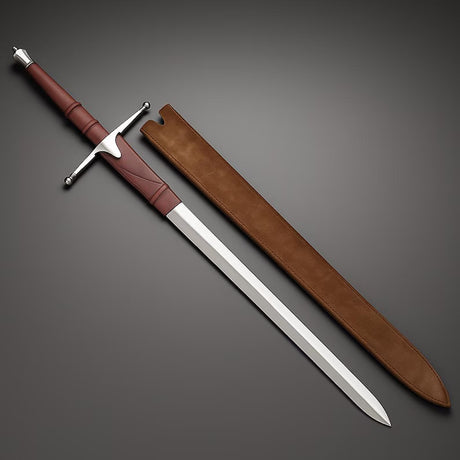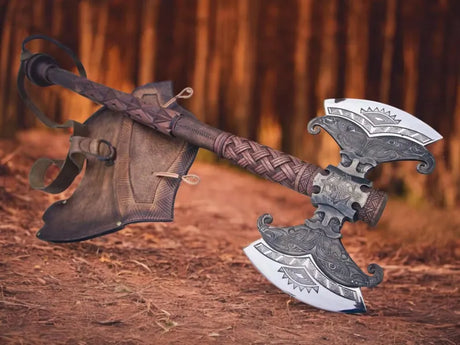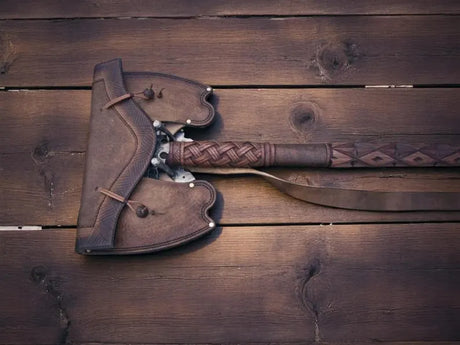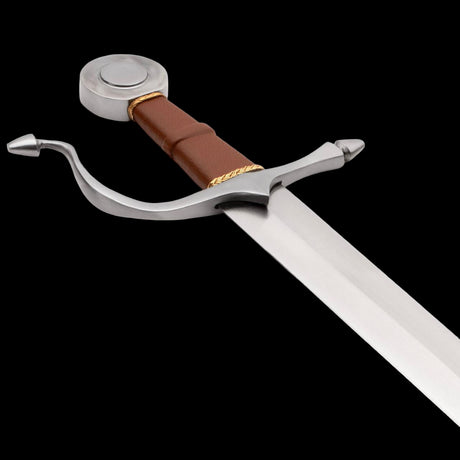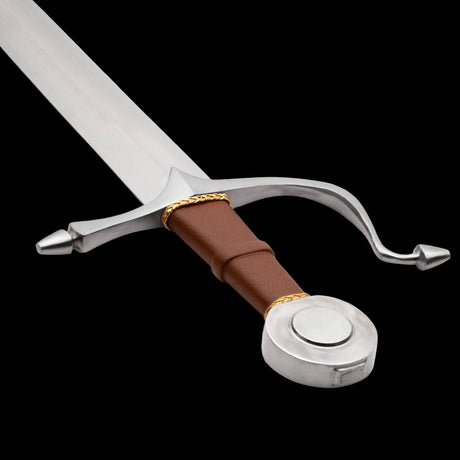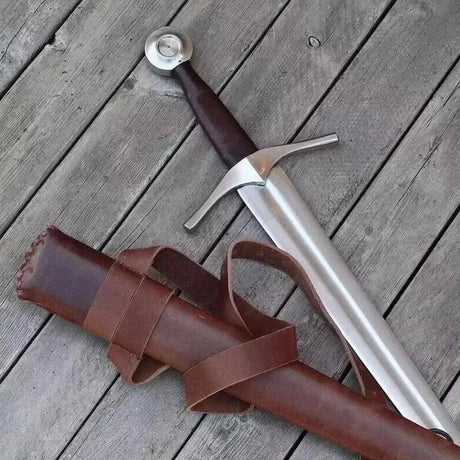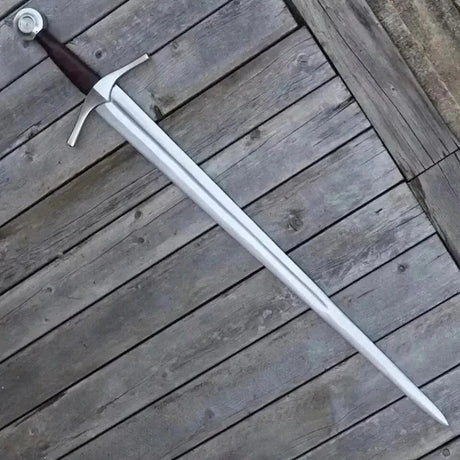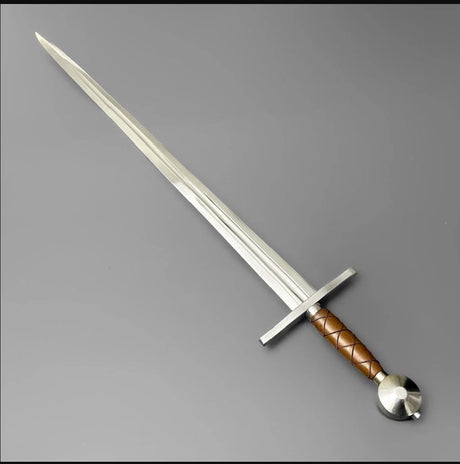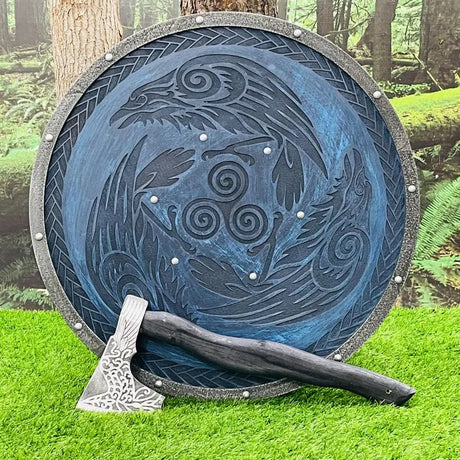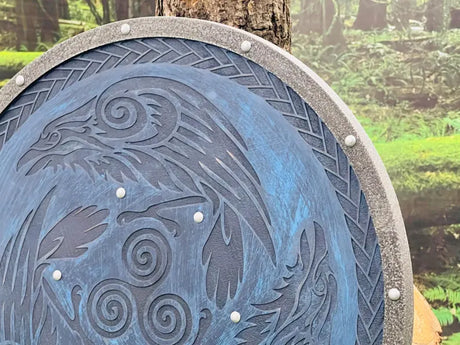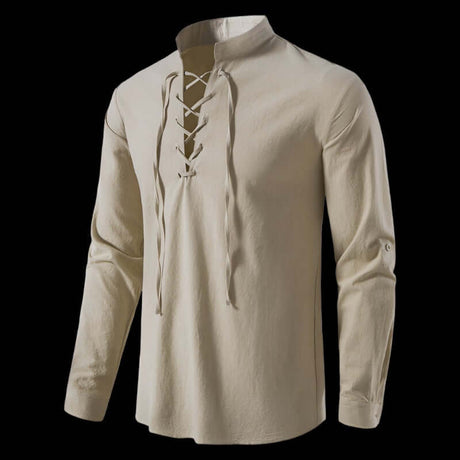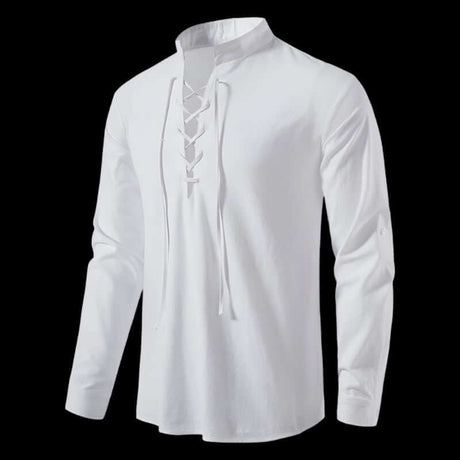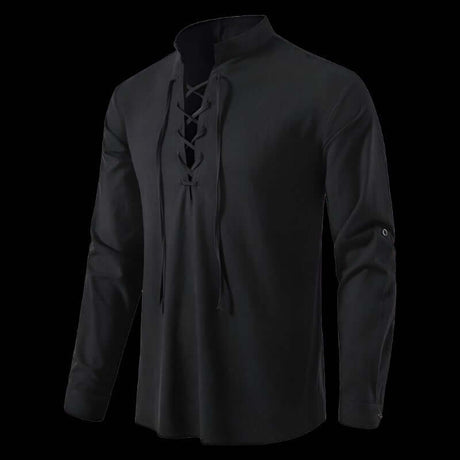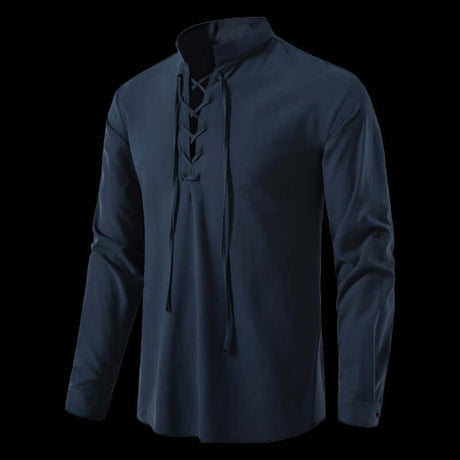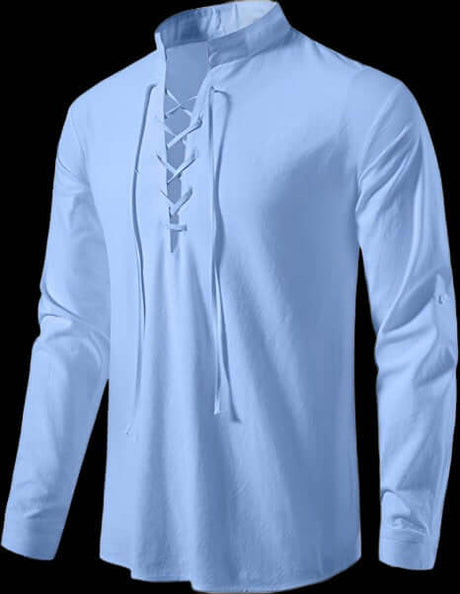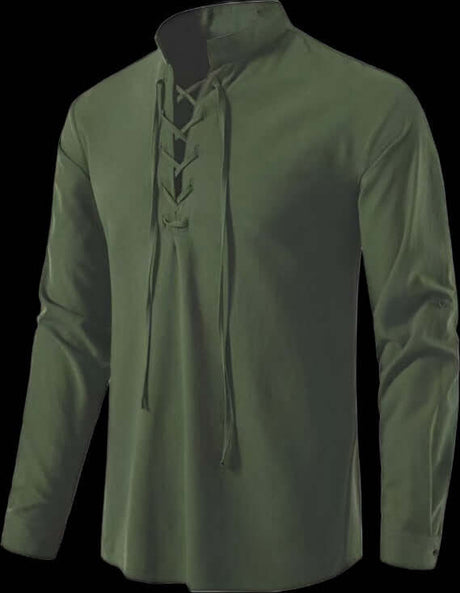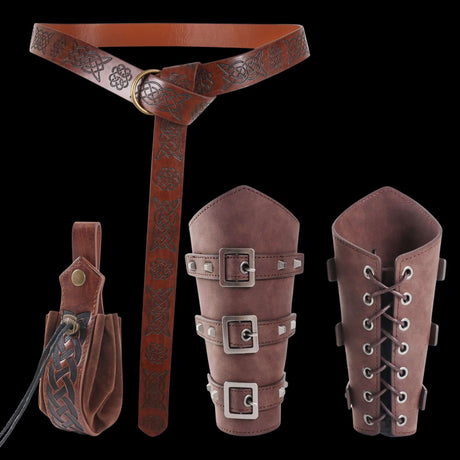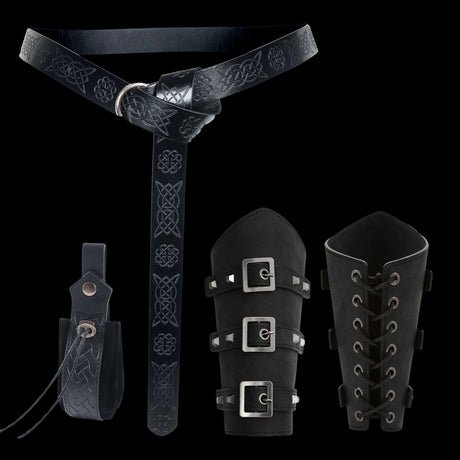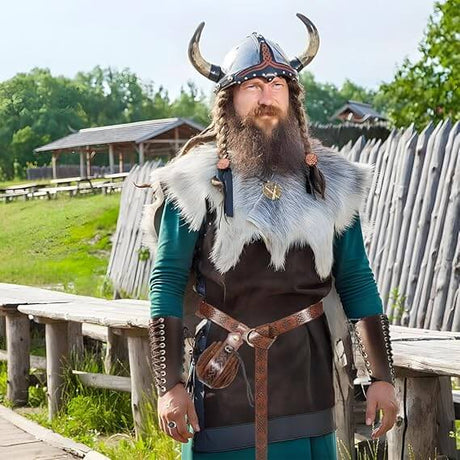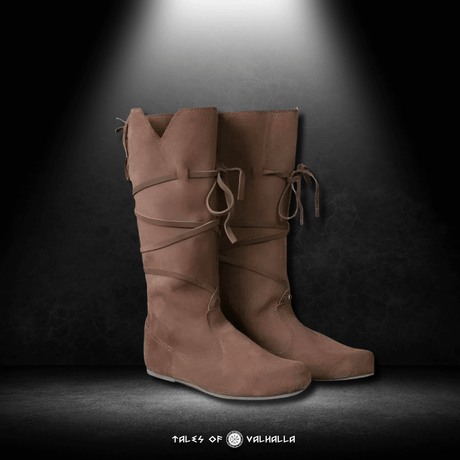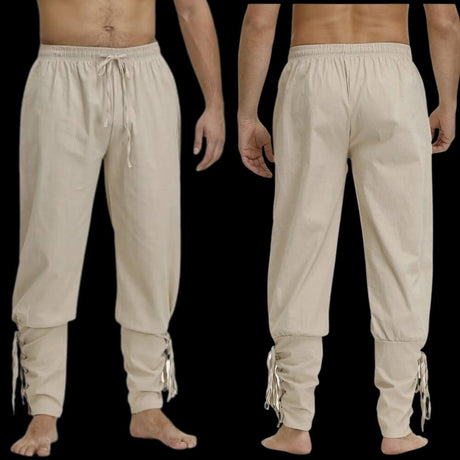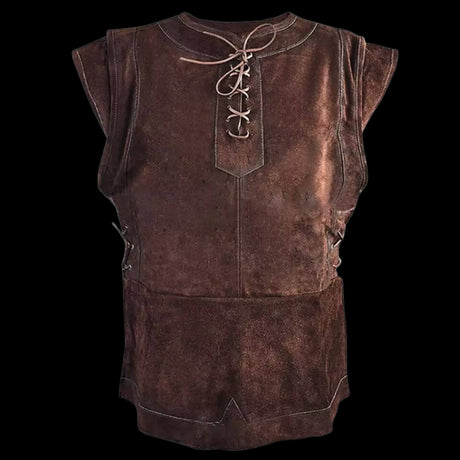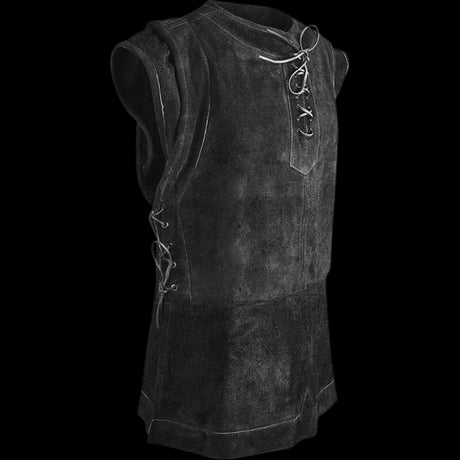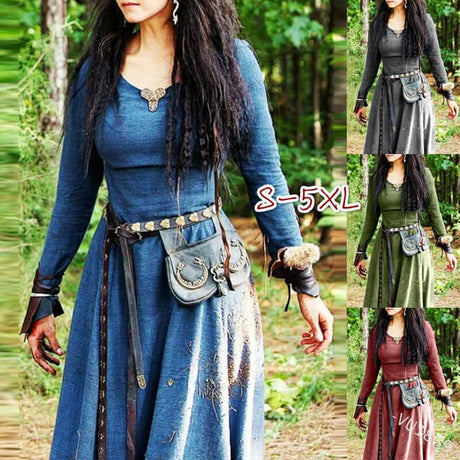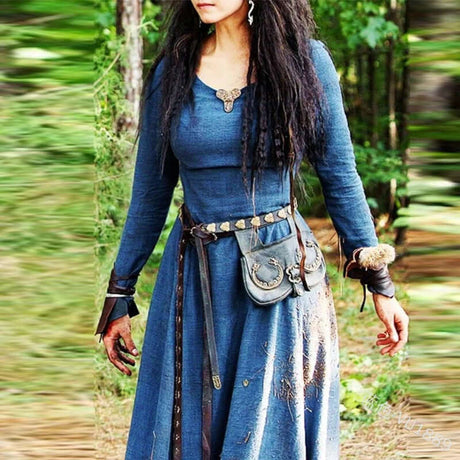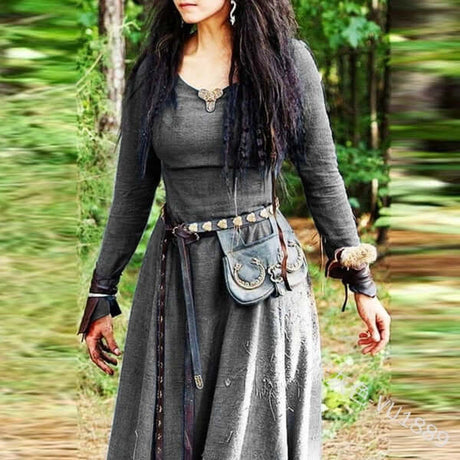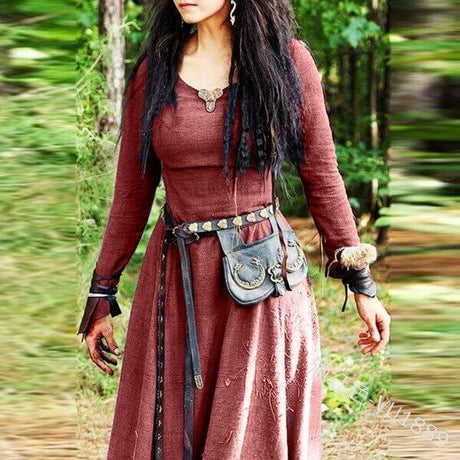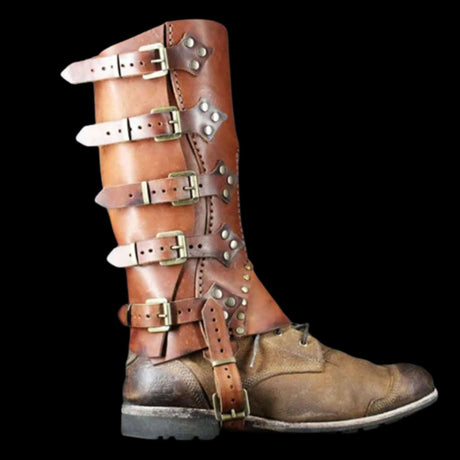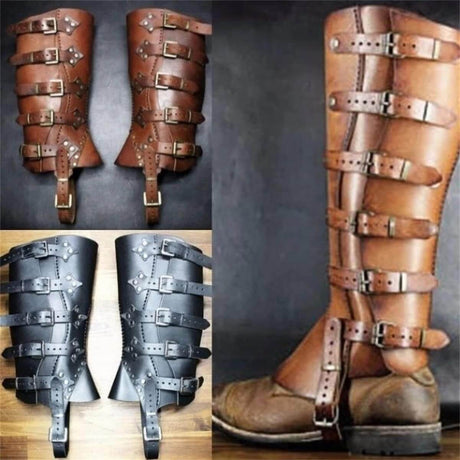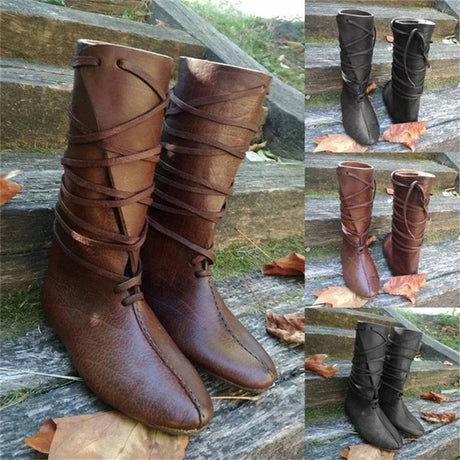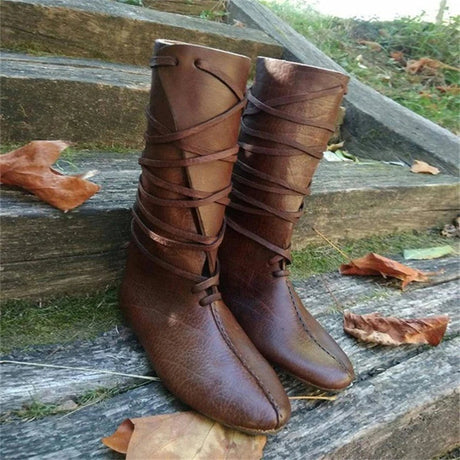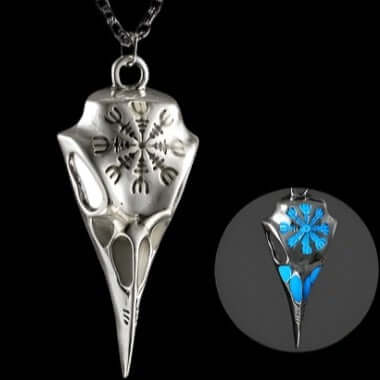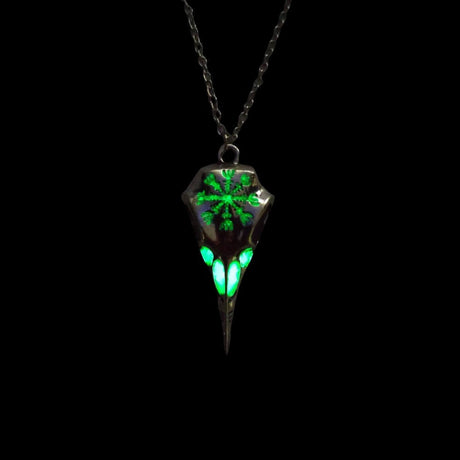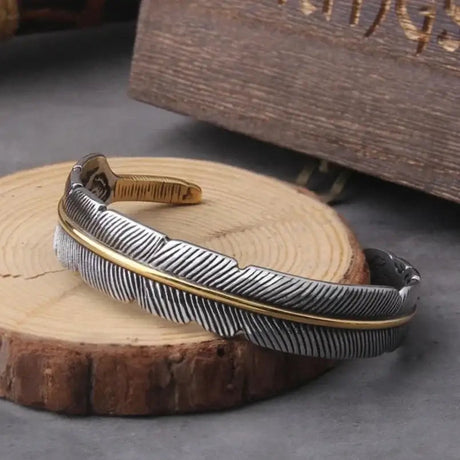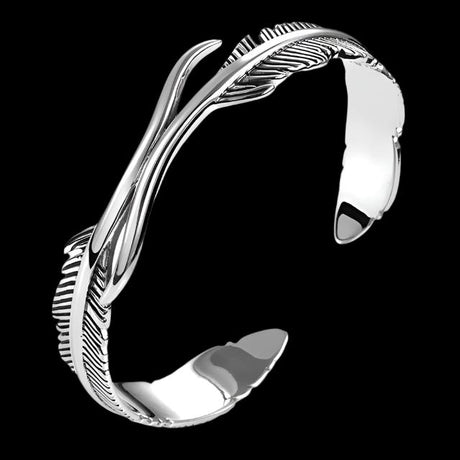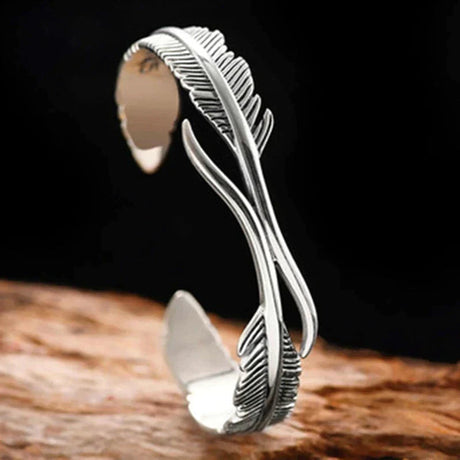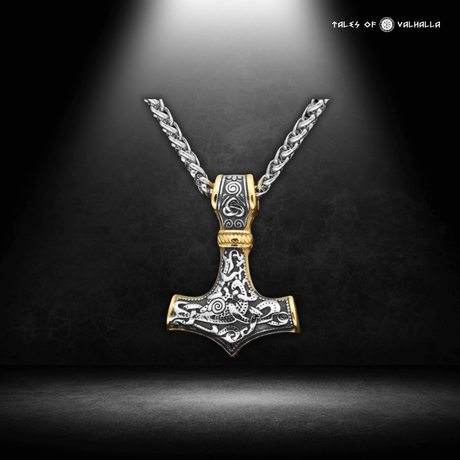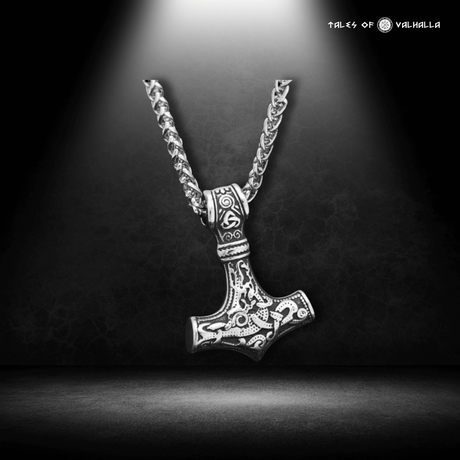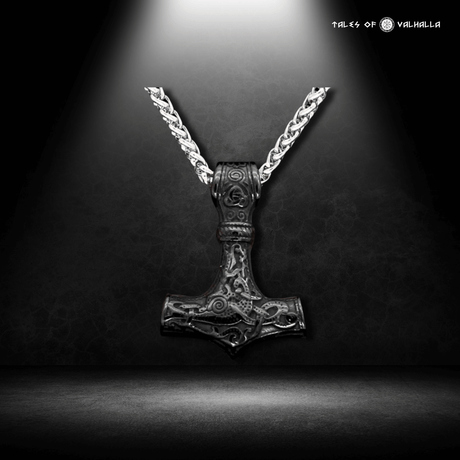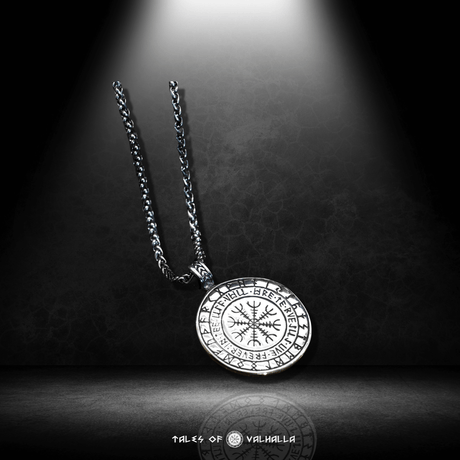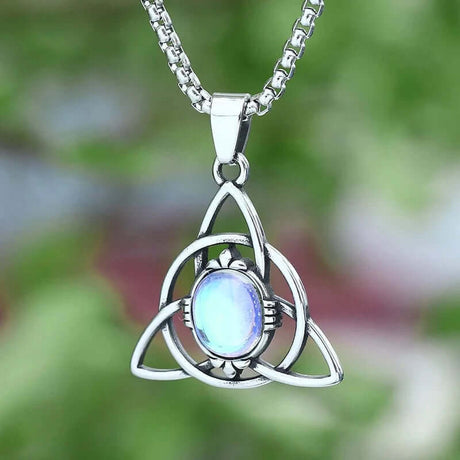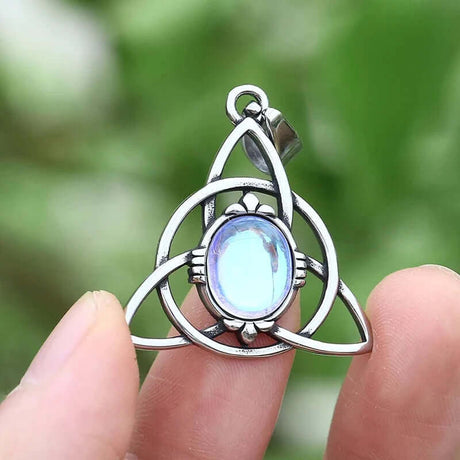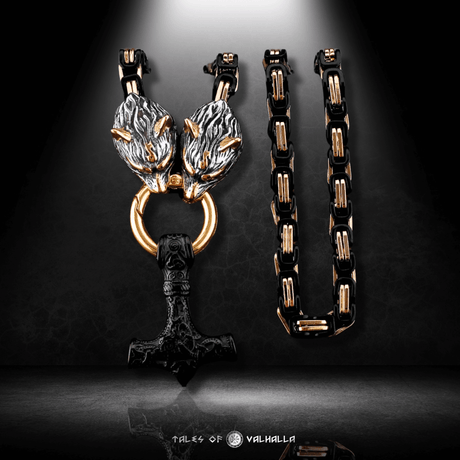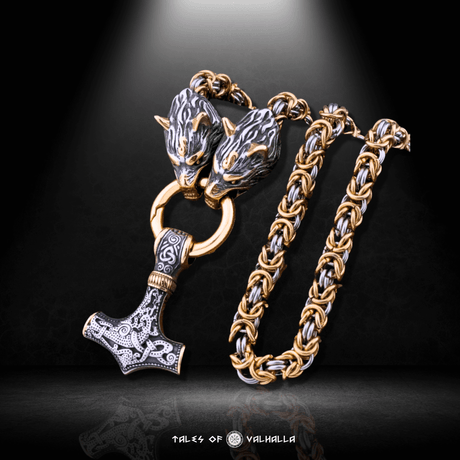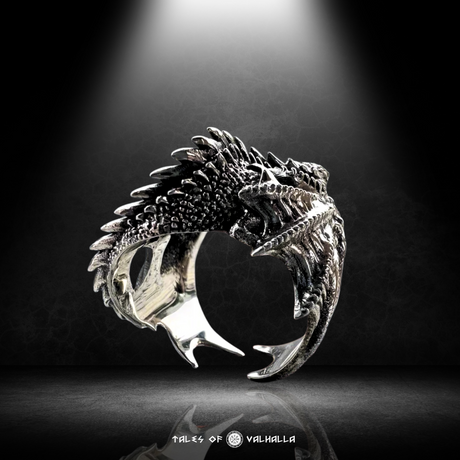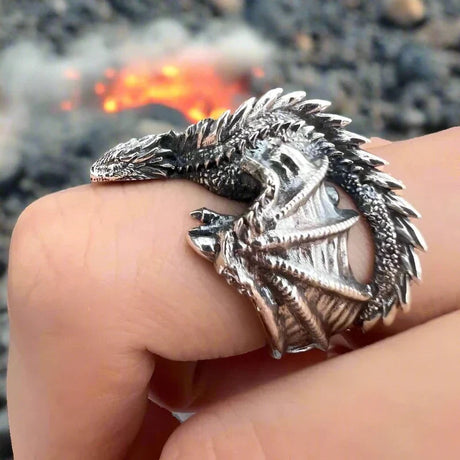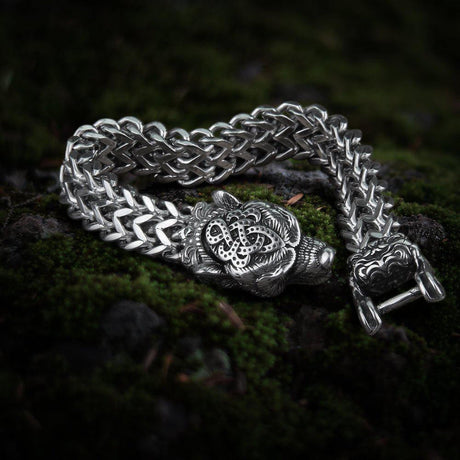When Americans think of the connection between Vikings and Ireland, the image that often comes to mind is one of violent conflict: dragon-prowed longships appearing out of the mist to plunder rich, unsuspecting monasteries. And for a time, that was the brutal reality. But the story of the Irish Vikings is far more complex and transformative than a simple tale of raids and destruction. It is a saga of settlement, of trade, of cultural fusion, and, most surprisingly, of creation. The Norsemen who came to Ireland were not just a fleeting terror; they became the founders of its first cities and an integral part of its medieval tapestry.
This deep dive will explore the fascinating and often misunderstood history of the Irish Vikings. We will journey from the first shocking raids to the establishment of powerful Norse kingdoms, and finally, to the emergence of a unique and influential Hiberno-Norse culture. Forget the one-dimensional stereotype of the raider; the true story of the Irish Vikings is about how they went from being the terror of the Emerald Isle to becoming its first urban planners.
The First Wave: The Age of Raids (c. 795 - 840 AD)
The story of the Irish Vikings begins with fire and fear. Before their arrival, Ireland was a land of rural communities and powerful, wealthy monasteries. It was not a unified kingdom but a patchwork of rival Gaelic chiefdoms. This landscape made it a perfect and vulnerable target for a new kind of warfare.

The First Wave: The Age of Raids (c. 795 - 840 AD)
The Attack on Lambay Island (795 AD)
The first recorded Viking raid in Ireland occurred in 795 AD, when Norse longships descended upon a monastery on Lambay Island, just off the coast of modern-day Dublin. This attack marked the beginning of a new and terrifying era for Ireland.
The Nature of Early Raids: A Strategy of Speed and Surprise
For the next several decades, the pattern was brutally effective.
- Hit-and-Run Tactics: Small, fast-moving fleets of longships would use their unparalleled seafaring skills to appear without warning along the coast or deep inland via Ireland's navigable rivers.
- Targeting Monasteries: The primary targets were the wealthy and undefended monasteries. These were not just places of prayer; they were centers of art, learning, and immense portable wealth in the form of gold chalices, silver reliquaries, and finely crafted metalwork.
- Plunder and Slaves: The Vikings seized these treasures and, just as importantly, they took captives. People were a valuable commodity, and the early Irish Vikings were deeply involved in the slave trade, selling their captives in markets across Europe.
Story Vignette 1: The Scholar's Terror
Brother Ciarán huddled in the round tower of his monastery, the stone cool against his back. Below, he could hear the guttural shouts of the Northmen and the splintering of wood. He clutched an illuminated manuscript, the Book of Kells, a lifetime of his community's sacred art. He had heard tales from the English coast of these "heathens," but the reality was a storm of chaos and violence. They moved with a terrifying speed, their axes glinting in the firelight. They were not just thieves; they were a force of nature, a terrifying new chapter in the story of Ireland, written by the first of the Irish Vikings.
The Second Wave: The Age of Settlement and City-Building (c. 841 AD onwards)
Around the mid-9th century, a crucial shift occurred in the strategy of the Irish Vikings. They were no longer content with just raiding and leaving. They came to stay.
From Raid to Residence: The Establishment of Longphorts
In 841 AD, a significant turning point was reached. The Vikings established a fortified naval camp, known in the Irish annals as a longphort (from the Irish for "ship camp"), at a strategic point on the River Liffey. This settlement, located at a dark tidal pool known in Irish as Dubh Linn ("Black Pool"), would become the foundation for the city of Dublin.
This was a game-changer. These permanent or semi-permanent bases allowed the Vikings to:
- Overwinter in Ireland: They no longer had to make the perilous journey back to Scandinavia each year.
- Consolidate Power: They could store their plunder, repair their ships, and build up their forces.
- Launch Raids More Effectively: They could now strike deeper and more consistently into the Irish interior.
The longphort at Dublin was the first and most important, but others soon followed at key strategic locations, which would evolve into Ireland's first major towns. The era of the Irish Vikings as city-builders had begun.
The Hiberno-Norse: A New Culture is Forged
Over the next century, the relationship between the Norse and the Irish became increasingly complex.
- Intermarriage: Viking settlers began to intermarry with the native Irish population. This created a new, blended culture and a new people: the Hiberno-Norse (or Norse-Gaels).
- Cultural Fusion: This new culture was a fascinating mix. The Irish Vikings adopted Irish language, dress, and customs. Many converted to Christianity. At the same time, they retained their distinct Norse identity, their skill in shipbuilding and commerce, and their connections to the wider Viking world.
- Alliances and Rivalries: The political landscape became a complex web of shifting alliances. Hiberno-Norse kings of Dublin would ally with Irish kings to fight other Irish kings, and vice versa. The lines between "Viking" and "Irish" became permanently blurred.
The Great Viking Destinations of Ireland: Walking in Norse Footsteps
The most enduring physical legacy of the Irish Vikings are the cities they founded. For any American traveler fascinated by Viking history, Ireland offers a unique opportunity to walk through a history that is over a thousand years old.

The Great Viking Destinations of Ireland: Walking in Norse Footsteps
1. Dublin (Dyflin): The Heart of Viking Ireland
There is no more important site in the story of the Irish Vikings than Dublin. What began as a strategic base grew into a powerful Norse kingdom and, eventually, the capital city of Ireland.
-
What to See Today:
The National Museum of Ireland - Archaeology: This is your essential first stop. The "Viking Ireland" exhibition is world-class, housing the incredible artifacts unearthed during the Wood Quay excavations. You can see remarkably preserved Viking swords, jewelry, tools, household items, and even the remains of a Viking skeleton.
Dublinia Museum: Located at Christ Church, Dublinia offers a highly interactive and immersive experience where you can walk through a reconstructed Viking street, see what life was like in a Norse longhouse, and learn about the myths and legends of the Vikings.
Wood Quay: While now the site of modern civic offices, this area along the River Liffey was the heart of Viking Dublin. Standing here allows you to imagine the bustling port it once was, the very first of the urban Irish Vikings' creations.
Christ Church Cathedral: This stunning cathedral has deep Viking roots. It was founded around 1028 by Sitric Silkbeard, the Hiberno-Norse King of Dublin.
Story Vignette 2: A Merchant of Dyflin
Thorgest, a Hiberno-Norse merchant in the 11th century, stood on the bustling docks of Dublin. His mother was Irish, his father Norse, and he was fluent in both languages. He watched as a ship from Iceland unloaded its cargo of walrus ivory, while another from Francia was laden with wine. He himself was preparing a shipment of fine Irish wool and hides, bound for the markets in England. He was a man of two worlds, a product of the cultural fusion that made these new towns so dynamic. For him, Dublin wasn't just a settlement; it was a hub of commerce, a gateway to the known world, built by the ingenuity of the Irish Vikings.
2. Waterford (Veðrafjörðr): Ireland's Oldest City
Waterford in the southeast proudly claims the title of Ireland's oldest city, founded by Norse settlers around 914 AD. Its Old Norse name, Veðrafjörðr, means "Windy Fjord."
- What to See Today:
Reginald's Tower: This massive stone tower is the most iconic landmark in Waterford and the oldest civic building in Ireland. It is named after Ragnall, the Viking leader who founded the city.
The Viking Triangle: This is the historic heart of the city, where the streets still follow the original Viking layout.
Waterford Treasures: This collection of museums tells the story of the city's 1100-year history, with a significant focus on its founding by the Irish Vikings.
3. Limerick (Hlymrekr) and Wexford (Veisafjörðr): Western and Eastern Strongholds
Limerick and Wexford are two other key cities that owe their origins to the Norse.
- Limerick: Located on the River Shannon, it was a crucial western trading post. The oldest parts of Limerick still retain elements of the original Viking street plan.
- Wexford: On the opposite coast, its narrow, winding streets are a direct legacy of its Viking origins. The nearby Irish National Heritage Park features a reconstructed Viking settlement.
- The Climax: The Battle of Clontarf (1014 AD)
The story of the Irish Vikings often culminates in one of the most famous and complex battles in Irish history: the Battle of Clontarf. This was not a simple Irish vs. Viking showdown, as it is often portrayed.
A Complex Web of Alliances
By 1014, the High King of Ireland, Brian Boru, sought to unify the island under his rule. His main rival was the Hiberno-Norse King of Dublin, Sitric Silkbeard.
- The Alliances: The battle saw Brian Boru and his Irish allies (which included some Viking mercenaries) pitted against a coalition force led by Sitric. Sitric's army was a mix of his own Dublin Vikings, Irish allies from the kingdom of Leinster, and, crucially, a large contingent of Viking mercenaries from the Orkney Islands and the Isle of Man.
The Battle and Its Aftermath
The battle, fought on Good Friday just outside Dublin, was incredibly bloody. Brian Boru's forces were ultimately victorious, breaking the political power of the Dublin Vikings for good. However, Brian Boru himself was killed in his tent at the moment of victory by a fleeing Viking chieftain.
The Misconception: Not the End of the Irish Vikings
Clontarf is often mistakenly seen as the battle that "drove the Vikings out of Ireland." This is incorrect. The battle broke the military power of the Dublin kingdom, but the Hiberno-Norse people remained. They continued to live in Dublin and other coastal towns as influential merchants and craftsmen, their culture thriving for another 150 years until the arrival of the Normans. The legacy of the Irish Vikings was now one of commerce, not conquest.
A Comparative Look: Viking Impact Across Europe
| Region | Primary Viking Group | Nature of Interaction | Lasting Legacy |
| Ireland | Norwegians (early), Danes, Hiberno-Norse | Raids, then settlement, city-founding, and cultural fusion. | Urbanization: Founded Dublin, Waterford, etc. Genetic: Significant Scandinavian DNA. Surnames. |
| England | Danes (primarily) | Raids, large-scale conquest (Great Heathen Army), settlement (Danelaw), and eventually, a Viking king (Canute). | Language: Huge influence on modern English. Place names. Genetic admixture. |
| France | Danes / Norwegians | Raids, then settlement. | Normandy: Vikings became the Normans, who later conquered England in 1066. |
| Russia/Eastern Europe | Swedes (Varangians/Rus') | Primarily trade and mercenary service, leading to the formation of a ruling dynasty. | State Formation: Foundational role in the Kievan Rus'. The very name "Russia." |
This table shows that while raiding was a common starting point, the long-term impact of the Vikings varied greatly by region. The story of the Irish Vikings is unique for its profound effect on the urbanization of the island.
The Enduring Legacy: How the Irish Vikings Shaped Modern Ireland
The impact of the Vikings on Ireland was profound and is still visible today for those who know where to look.
- The Birth of Irish Cities: The Vikings were the founders of Ireland's first major towns and cities. They introduced urban living, organized trade, and a commercial economy to a largely rural island.
- A Linguistic and Genetic Heritage: The Norse language left its mark on Irish, particularly with words related to shipping and commerce. Surnames like Doyle (Ó Dubhghaill, "descendant of the dark foreigner") and MacAuliffe (Mac Amhlaoibh, "son of Olaf") are derived from Norse names. Modern DNA studies have confirmed a significant Scandinavian genetic contribution to the modern Irish population.
- A Global Connection: The Irish Vikings turned Ireland into a major hub of a vast international trade network, connecting it to Scandinavia, Iceland, England, continental Europe, and even the Middle East.
Conclusion: Walking in the Footsteps of the Norse-Gaels
The story of the Irish Vikings is a powerful saga of transformation. They arrived as feared raiders, bringing terror and destruction, but they stayed as settlers, merchants, and city-builders. They fought against the Irish, but they also married them, traded with them, and allied with them, creating a unique and dynamic Hiberno-Norse culture that left a lasting mark on the Emerald Isle.
By visiting the great Viking Destinations of Ireland, you're not just seeing historical sites; you're walking through the very foundations of urban Ireland. From the world-class museum exhibits in Dublin to the ancient tower in Waterford, the echoes of the Viking Age are all around you. The legacy of the Irish Vikings is a reminder that culture is not static, and that the story of Ireland is a rich and complex tapestry, woven from both Gaelic and Norse threads.










